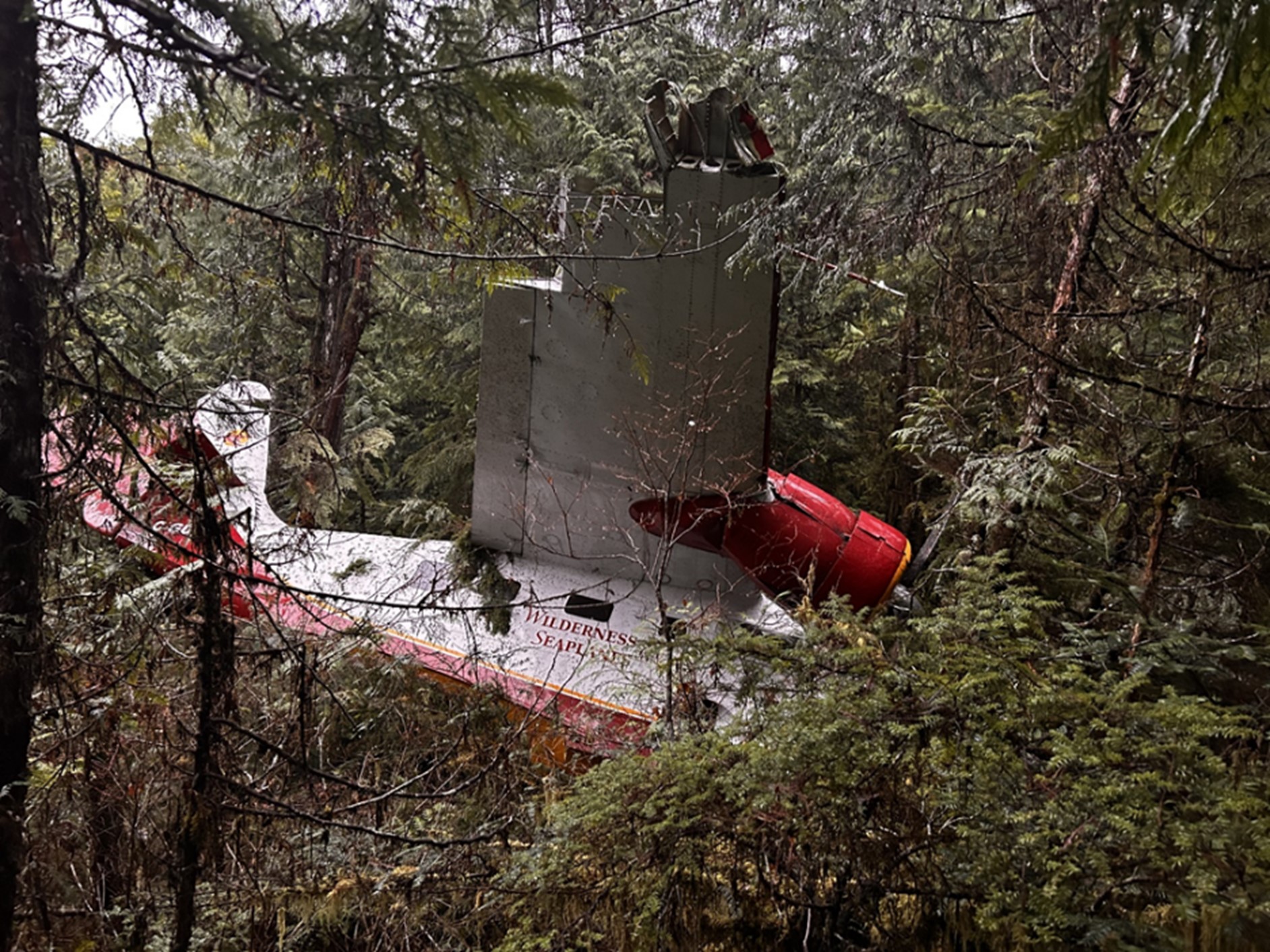Collision with terrain
Wilderness Seaplanes Ltd.
Grumman G-21A, C-GDDJ
Bella Bella (Campbell Island) Airport (CBBC), British Columbia, 0.5 NM SE
The occurrence
At 1428 Pacific Standard Time on 18 December 2023, the Wilderness Seaplanes Ltd. Grumman G-21A Goose aircraft (registration C-GDDJ, serial number 1184) departed Bella Bella (Campbell Island) Airport (CBBC), British Columbia, on a visual flight rules flight to Port Hardy Airport (CYZT), British Columbia, with 1 pilot and 4 passengers on board. Shortly after takeoff, the aircraft experienced a dual engine failure and was unable to maintain altitude. The pilot transmitted a Mayday call on the radio before the aircraft collided with terrain a short distance from the departure runway. The pilot and passengers were able to egress the aircraft and make their way to a nearby road, from which they were transported to hospital by motor vehicle. All occupants received minor injuries. The aircraft was substantially damaged.
Media materials
Investigation information
Download high-resolution photos from the TSB Flickr page.
Class of investigation
This is a class 3 investigation. These investigations analyze a small number of safety issues, and may result in recommendations. Class 3 investigations are generally completed within 450 days. For more information, see the Policy on Occurrence Classification.
TSB investigation process
There are 3 phases to a TSB investigation
- Field phase: a team of investigators examines the occurrence site and wreckage, interviews witnesses and collects pertinent information.
- Examination and analysis phase: the TSB reviews pertinent records, tests components of the wreckage in the lab, determines the sequence of events and identifies safety deficiencies. When safety deficiencies are suspected or confirmed, the TSB advises the appropriate authority without waiting until publication of the final report.
- Report phase: a confidential draft report is approved by the Board and sent to persons and corporations who are directly concerned by the report. They then have the opportunity to dispute or correct information they believe to be incorrect. The Board considers all representations before approving the final report, which is subsequently released to the public.
For more information, see our Investigation process page.
The TSB is an independent agency that investigates air, marine, pipeline, and rail transportation occurrences. Its sole aim is the advancement of transportation safety. It is not the function of the Board to assign fault or determine civil or criminal liability.
